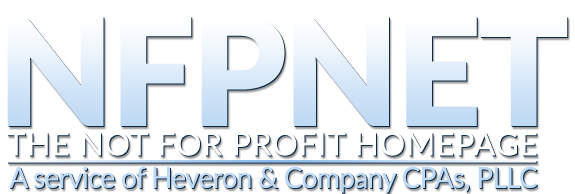Tag Archive for: Federal Awards
Uniform Guidance-Payroll Documentation
Recently there have been numerous reports of significantly increased enforcement of requirements for documenting payroll allocations with personnel activity reports whenever federal funding is received. So some of the provisions contained in the “Uniform Administrative Requirements, Cost Principles, and Audit Requirements for Federal Awards”, effective for 2015, will be welcome. Some of these provide some relief from recordkeeping requirements and others provide some welcome clarification
Specifically, rules for documenting payroll allocation include:
Budget estimates can be used on an interim basis as long as they are reasonable approximations of time actually worked, they are updated when appropriate, and ultimately adjusted as necessary.
Charges to federal awards for salaries and wages must be based on records that accurately reflect the work performed and is supported by a system of internal control which provides reasonable assurance that the charges are accurate, allowable and properly allocated.
Another provision states that, for records which meet these standards, the entity will not be required to provide additional support or documentation for work performed. However, later on it says that in cases where records do not meet the standards, the federal government may require personal activity reports.
The section on payroll documentation goes on to say that cognizant agencies for indirect costs are encouraged to approve alternative proposals based on outcomes and milestones for program performance where these are clearly documented. These can be acceptable alternatives to the documentation requirements above.
Incentive compensation is allowable if it’s based on cost reduction, efficient performance, safety awards, and similar criteria, as long as overall compensation is reasonable
Compensation is also allowable when paid to trustees, directors, or officers when it is reasonable and is paid for services.
Fringe benefits, including standard items, authorized absences, pursuant to an organization’s policy, and even certain reserves for self-insurance of unemployment are allowable.
Paid personal use of company vehicles is not allowed even if it is reported as compensation.
Postretirement health insurance is allowed generally on a pay-as-you-go basis.
Severance pay is allowable as long as it meets certain criteria such as being subject to an established policy.
If you receive and spend federal awards, documentation for payroll cost is still very important, but this flexibility is a welcome relief.
OMB Proposed Uniform Guidance
Hello everyone, welcome back!
Today we’ll be discussing the Proposed OMB Uniform Guidance: Cost Principles, Audit, and Administrative Requirements for Federal Awards, more specifically changes to OMB Circular A-133, Audits of States, Local Governments, and Non-Profit Organizations. Wow, that’s quite a mouthful; see if you can say it 5 times fast!
The most important and impactful proposed change is to the limit for requiring a single audit, currently, if you expend $500,000 or more of federal funds than you are required to undergo an A-133 audit, however, there is good news for some of you. That threshold is proposed to be increased to $750,000! What this means for some of you is that the current scope of your audit will be lessoned. This change is only for the A-133 portion of your audit and does not affect other requirements imposed by other municipalities or organizations. Therefore, if you fall under $750,000 in federal expenditures you may not need to read further, however, you may want to in case this part of the proposed changes is not fulfilled.
Another proposed change in the above referenced guidance would be to increase the threshold between Type A/B programs from $300,000 to $500,000. As those of you whom have Type A know, these programs must be audited every three years as they are considered normal risk the third year after their last audit regardless of prior findings. This means that for some of you your Type A programs may be decreased or even eliminated, which may decrease the scope of you’re A-133 audits!
In addition they are considering other changes to a Type A program being labeled normal risk. Some of these are: questionable costs above 5% of the total expenses for the program, a material weakness found in the internal controls, or a failure to achieve an unqualified auditor’s opinion in its last audit.
Furthermore, they are proposing changes to the Percentage of Coverage decreasing the 50% for normal organizations to 40% and the 25% for low-risk to 20%. This means we, as auditors, may not have to test as many programs.
The proposal also includes changes to who may be deemed low-risk versus normal. The criteria for low-risk would now include the auditor’s findings regarding going concern of the organization and the timely submission of data collection forms. This proposal may help some of you to drop from normal to low-risk, again reducing the scope of your A-133 audit.
Finally, remember that all of the above are simply proposals and will not affect anyone until they are made official! Check back with us in the future for further information.
Until next time!
“All labor that uplifts humanity has dignity and importance and should be undertaken with painstaking excellence,” Rev. Dr. Martin Luther King, Jr.
